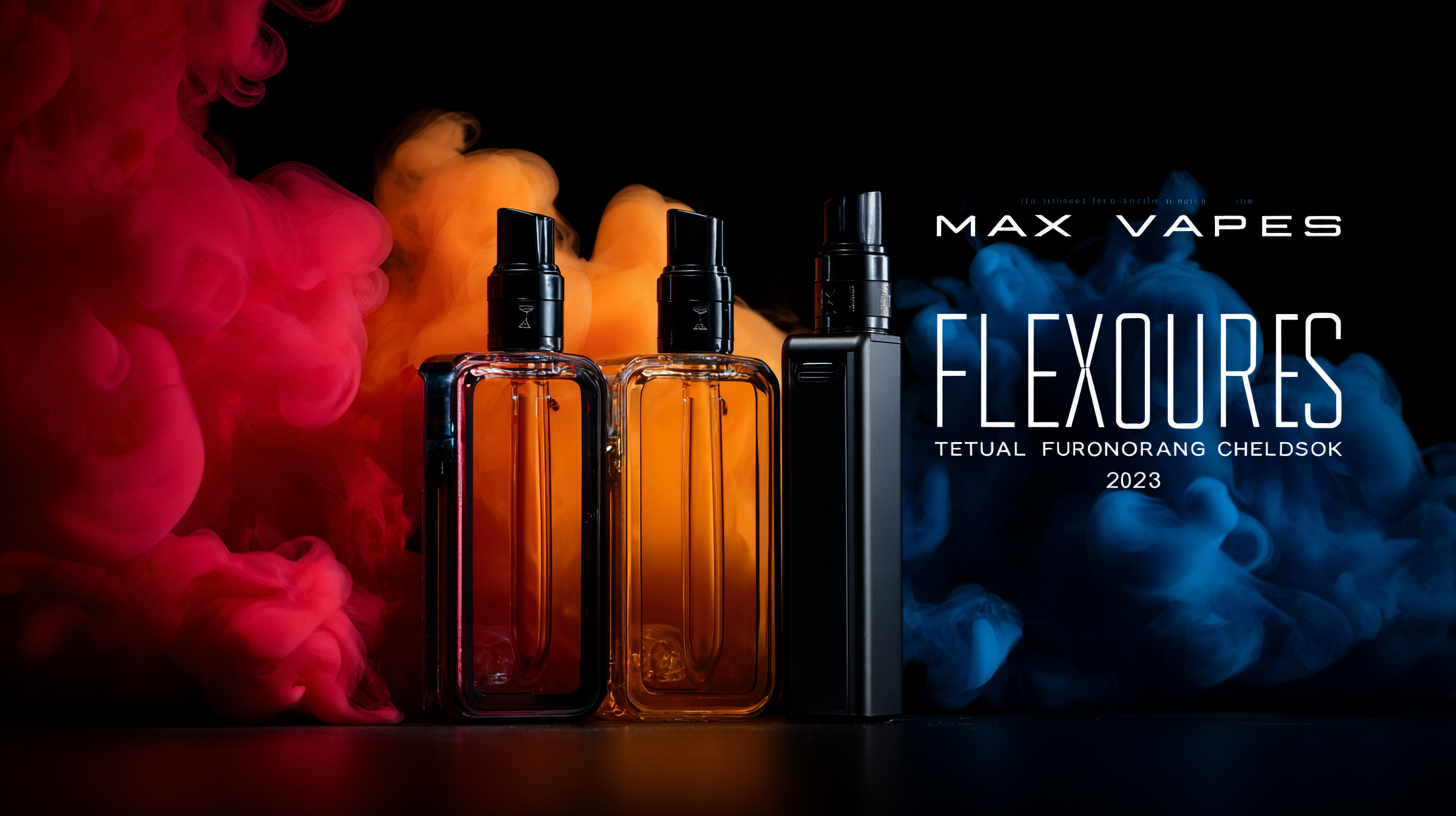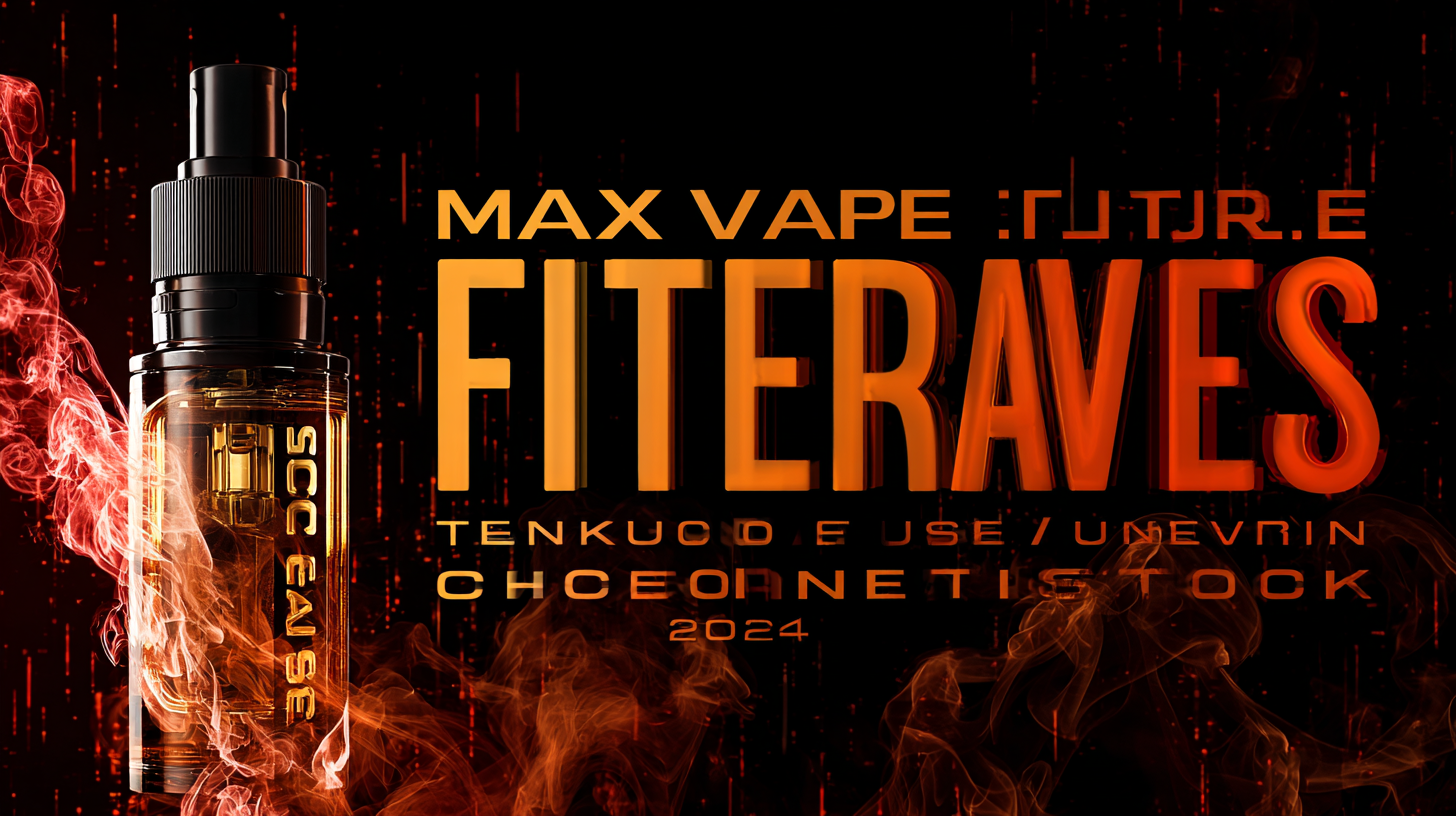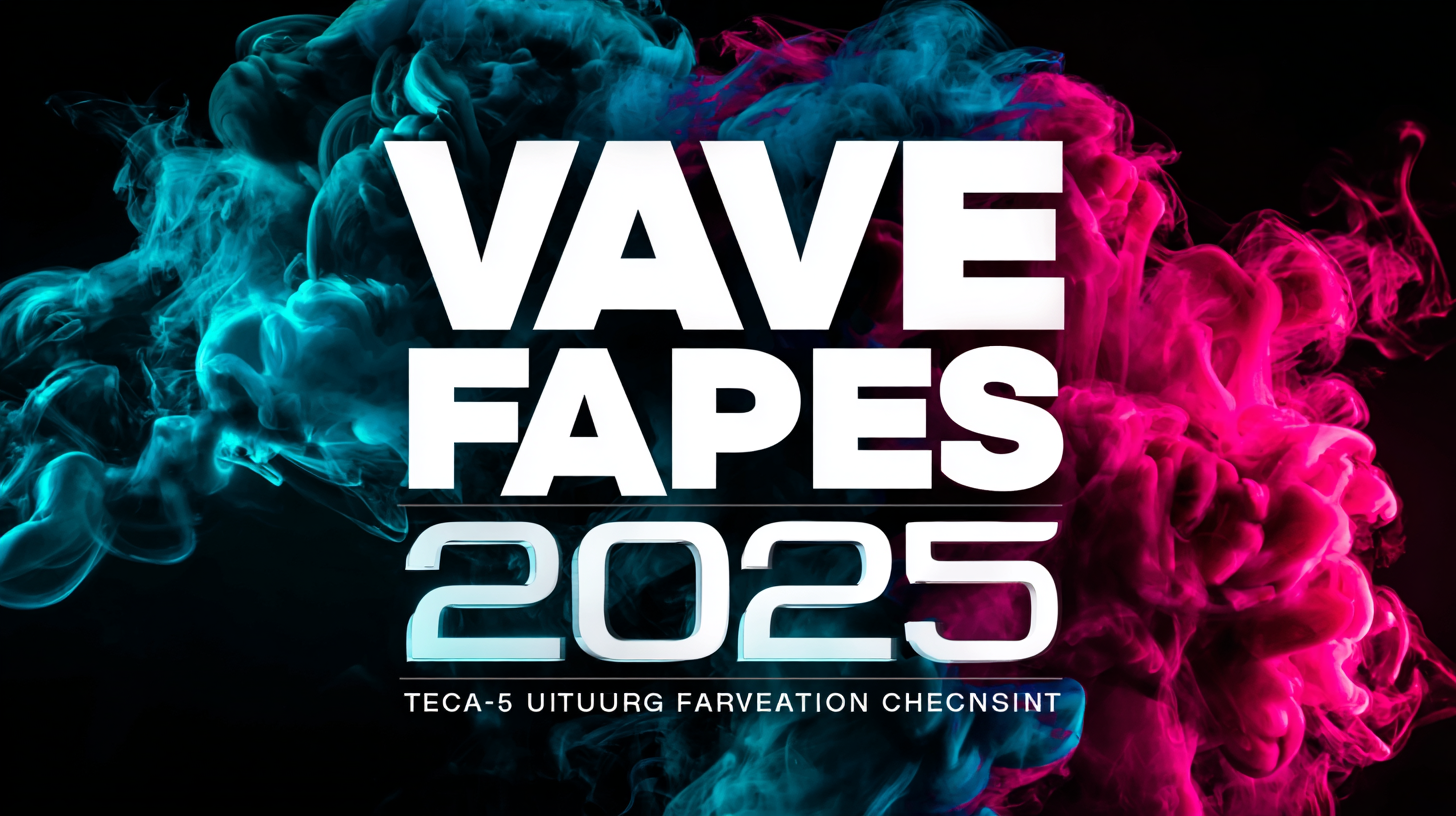As we venture into 2025, the vaping industry continues to evolve at an unprecedented pace, particularly in the realm of flavor innovation. Reports indicate that the global vape market is projected to surpass $45 billion by 2025, with an increasing demand for diverse and unique vape flavors, which are now more critical than ever to consumer satisfaction. Among these trends, "Max Vape Flavors" stands out as a key player, harnessing cutting-edge technology to enhance flavor experiences while ensuring compliance with emerging regulations. Industry analyses show that nearly 70% of vapers consider flavor variety as one of the top factors influencing their purchasing decisions, signaling a significant shift toward a more nuanced flavor landscape. This blog outlines the essential trends and innovations that will shape the vaping flavor market in the coming years, providing a comprehensive checklist for stakeholders aiming to stay ahead in this dynamic sector.

The rapidly evolving landscape of vape flavor development underscores the significance of industry certification in ensuring product safety and quality. As artificial intelligence research indicates, the heating of e-cigarette flavor chemicals can lead to the formation of potentially harmful compounds. This highlights the urgent need for rigorous industry standards and certifications that guarantee the safety of flavor ingredients. Companies focusing on vape flavor innovation must prioritize transparency in their formulations, enabling consumers to make informed choices.
Recent advancements in cannabis hardware, particularly those aimed at terpene safety, illustrate the industry's commitment to enhancing product safety while still delivering unique flavor profiles. The introduction of innovative materials and technologies reflects a broader trend of integrating health considerations into flavor development processes. With regulatory bodies tightening their grasp on vaping standards globally, the importance of industry certification will become even more pronounced, setting benchmarks that support both ethical practices and consumer trust.
As we dive into 2025, consumer preferences for vape flavor profiles are evolving at an unprecedented pace, driven by a blend of innovation and heightened awareness of health and wellness. This year, vapers are gravitating towards more natural, plant-based flavors that resonate with their desire for authenticity and quality. Expect to see a growing demand for flavors that incorporate botanical extracts, fresh fruits, and herbal notes, tapping into a holistic approach to flavor innovation.

Moreover, sustainability is taking center stage in the vape industry, with more consumers seeking eco-friendly options. Brands are responding by sourcing ingredients from sustainable farms and utilizing biodegradable packaging. Additionally, the trend of personalized flavors is on the rise, with tech advancements allowing consumers to customize their vaping experience. This shift towards tailored profiles not only enhances customer satisfaction but also fosters a deeper connection between users and their chosen products, making each vape session uniquely personal and memorable.
As the vape industry experiences rapid growth, understanding the regulatory landscape is crucial for driving innovation in vape flavors. Regulations vary significantly across different regions, impacting how flavor profiles are created, marketed, and distributed. For instance, stricter regulations in parts of Europe and North America have led to a considerable reduction in the variety of flavors available in those markets, pushing manufacturers to adapt their strategies. This regulatory pressure can fuel creativity, as companies seek to develop appealing flavors that comply with the law while still capturing consumer interest.

Looking ahead to 2025, it is expected that the regulatory environment will continue to evolve, influencing flavor innovation. Companies must remain agile, monitoring regulatory changes and consumer preferences closely. Engaging in proactive dialogue with regulatory bodies can also help shape future policies, ensuring that innovation can thrive while addressing public health concerns. The challenge lies in navigating this complex landscape while maintaining a commitment to user satisfaction and compliance, fostering an industry that not only responds to regulations but also sets the standards for responsible vaping.
As we look ahead to 2025, technological advances are set to revolutionize the flavor extraction processes critical to vape innovation. Recent developments in flavoromics and machine learning are paving the way for enhanced understanding and identification of flavor compounds in various substances. By leveraging these sophisticated analytical tools, manufacturers can better tailor vape flavors to meet consumer preferences, maximizing both taste and satisfaction.
Moreover, innovative extraction techniques, such as green extraction technologies, are emerging as game-changers in flavor development. These methods not only improve the yield and efficiency of extracting flavors from natural sources but also align with sustainable practices by reducing waste and energy consumption. The integration of biotechnological advancements, including microbial fermentation, further enriches the flavor profile of vape products, granting manufacturers unprecedented control over the sensory aspects of their offerings. As these technologies converge, the future of vape flavor innovation is poised for exciting transformations, making it essential for industry players to stay attuned to these advancements.
This bar chart represents the projected advancements in vape flavor innovation technologies for 2025, focusing on various extraction efficiency rates and consumer preference trends.
As the vape industry continues to evolve, brands must stay ahead of consumer preferences and regulatory changes to remain competitive in the dynamic vape flavor market. According to a report by Mordor Intelligence, the global vape market is expected to grow at a CAGR of 24.5% from 2021 to 2026, highlighting the increasing importance of innovative flavor offerings. Brands should adopt strategies that prioritize consumer engagement, allowing for personalized flavor experiences that resonate with diverse demographics. Utilizing social media platforms for direct feedback, facilitating flavor creation contests, and tracking trends through market research can significantly enhance customer loyalty and brand recognition.
Moreover, understanding regulatory impacts is crucial in shaping vape flavor innovation. The FDA's recent advancements towards stricter flavor regulations require brands to adapt quickly or risk losing market access. Brands that proactively develop compliant yet appealing flavors, focusing on natural ingredients and transparency, can effectively navigate these challenges. Furthermore, leveraging data analytics to monitor flavor trends can help predict shifts in consumer preferences, allowing brands to innovate and diversify their offerings in a timely manner. By strategizing around these key factors, vape companies can maximize their impact in a competitive landscape while aligning closely with consumer desires.
| Trend Category | Description | Expected Impact | Implementation Strategy |
|---|---|---|---|
| Natural Flavorants | Increased focus on plant-derived flavoring agents to appeal to health-conscious consumers. | Positive brand perception and potential market growth. | Research and develop sourcing from certified suppliers. |
| Custom Flavor Blends | Personalized flavor options allowing users to mix and match according to their preferences. | Enhanced user engagement and brand loyalty. | Implement technology for consumer flavor blending interfaces. |
| Responsible Marketing | Focus on ethical marketing practices, highlighting age restrictions and responsible usage. | Reduced regulatory scrutiny and improved brand trust. | Develop a comprehensive marketing strategy adhering to regulatory guidelines. |
| Sustainable Packaging | Utilization of eco-friendly materials for packaging to minimize environmental impact. | Attract environmentally conscious consumers and improve brand image. | Research new materials and collaborate with sustainable suppliers. |
| Advanced Extraction Techniques | Adoption of cutting-edge methods for extracting flavors to enhance quality and consistency. | Higher quality products leading to increased sales. | Invest in R&D for new extraction technologies. |
